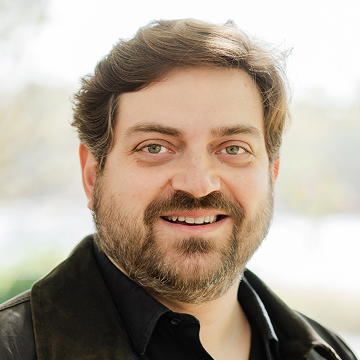Inside a Salt Lake City warehouse, a group of men are controlling the weather.
As the team of drone pilots and environmental specialists — employees of the cloud seeding company Rainmaker — spray chemicals into the sky to induce snow, a small crowd, including one of Utah’s top environmental officials, watches carefully.
The process of cloud seeding, a long-studied method of artificially inducing precipitation, has been creating rain and snow in Utah since the 1950s. But in the era of President Donald Trump and Health Secretary Robert F. Kennedy Jr.’s “Make America Health Again” movement, weather modification has become a target of conspiracy theories and political attacks.
In September, Georgia Rep. Marjorie Taylor Greene held a hearing titled “Playing God with the Weather — a Disastrous Forecast.” She is also pushing legislation to heavily fine and potentially jail anyone conducting “weather modification” activities. Her bill is co-sponsored by Reps. Thomas Massie, Tim Burchett and Tony Wied.
“Modern attempts at weather control don’t appeal to divinity,” Greene said in her opening statement. “Instead, they use technology to put chemicals in the sky.”
But in Utah, cloud seeding is just about the water.
“Utah’s the second driest state in the country,” U.S. Rep. Celeste Maloy, one of Greene’s Republican colleagues, said in an interview at Rainmaker’s event launching this year’s cloud seeding season, which the company billed as “the largest cloud seeding program in modern American history.”
“We’re always looking for ways to have better water policy and be more innovative,” Maloy said.
She added, “Look, every new idea gets pushed back, and some ideas are great and some of them aren’t. The only way to find out is to show up and learn and listen and try things. Utah has been innovative and forward-looking on this, and I’m really excited that the state is.”
Cloud seeding is not new, nor is its basic premise — dispersing substances like silver iodide into already-existing clouds to induce condensation and precipitation — particularly complicated. Nevertheless, it’s drawn criticism from some who claim that the chemicals are used at high enough levels to be dangerous to people, or that the government is purposely engineering the weather to harm specific communities, despite no evidence to support either theory.
In particular, the MAHA movement has made “geoengineering” one of its key issues.
In April, Kennedy was asked how to stop “stratospheric aerosol injections” — a reference to some weather modification practices — on “The Dr. Phil Podcast.”
“I’m going to do everything in my power to stop it,” Kennedy said.
Across the country, some states have begun to introduce anti-weather-modification legislation. Florida passed a geoengineering ban in April 2025 that prohibits cloud seeding. Montana banned certain geoengineering practices in March, but stopped short of cloud seeding for water resource management.
A similar effort to prohibit “the release of chemicals or substances from an aircraft for the purpose of weather geoengineering” even made its way through the Utah state Senate earlier this year, though the bill, as passed, explicitly exempted cloud seeding practices and never got a vote on the House floor.
Bills seeking to restrict geoengineering have also been introduced in New Jersey, North Carolina, Pennsylvania, Rhode Island, Texas and Vermont.
Utah’s two Republican senators are also split on the issue. While Sen. John Curtis says whether or not to use cloud seeding is Utah’s decision, “and I support them if that’s what they want to do,” Sen. Mike Lee has said, “Putting the government in charge of the weather is never going to end well.”
But Utah’s highest-ranking natural resource official disagrees.
Cloud seeding has a champion in Joel Ferry, the Department of Natural Resources director and a former member of the state Legislature. Ferry has pushed for the strategy for years — to the point that some in the state, as Rainmaker officials and Ferry himself noted at the event, refer to cloud seeding as “Ferry dust.” During an interview at Rainmaker’s event, he pushed back against conspiracy theories about the work.
“We look at the facts and we recognize that cloud seeding, the way that we do it, is actually quite beneficial for the environment,” Ferry said. “One thing that we’re really good at in Utah is looking at the science, analyzing the data and coming up with informed decisions, as opposed to just going with conspiracy theories or whatever the hype of the day is.”
Ferry noted that cloud seeding “has been happening for decades” and that he sees Rainmaker’s work as “just doing it in a more advanced way to help us get the results that we want, where we want them, when we want them and how we want them.”Ferry said he didn’t want to discount concerns and wants to ensure the state has data and research to validate its cloud seeding efforts.
“This is a really critical part of how Utah continues to thrive and survive for the future,” he said. “Water is at the center of that.”
In 2023, the Utah Legislature made a major investment in the program, earmarking $12 million in one-time funding and an additional $5 million in ongoing spending. Earlier this year, it allocated an additional $3 million in one-time funding for the Bear River Basin Cloud Seeding Program, the project helping to fund Rainmaker’s work.
And it’s not just state officials who still see the benefits of cloud seeding.
Dan Anderson, a corn, alfalfa and cattle farmer in Fillmore, Utah, said he sees the practice as vital for the future of farming, as the aquifer in his valley is shrinking.
“Anyone that actually takes the time to look into it knows that it has some validity to it,” Anderson said during an interview at the Rainmaker event. “No one wants to waste their money, but I think the technology supports it, and I’m excited.”
Rainmaker CEO Augustus Doricko doesn’t think Kennedy always differentiates between cloud seeding and other conspiracy topics like solar radiation modification and so-called chemtrails. Whether that’s a “rhetorical tactic or earnest enough,” he compares Kennedy’s language to saying “planes are deliberately trying to kill everybody with, like, mRNA vaccine nanobots.”
Meeting political decision-makers where they are could be as straightforward as pointing out ways in which cloud seeding is in alignment with some of the Trump administration’s other priorities, like the MAHA movement’s push for more sustainable agriculture and fewer environmental toxins, said Rainmaker’s head of operations, Parker Cardwell.
“Our mission is to create soil that is more arable, farmland that’s more viable, communities that are more flourishing,” Cardwell said. “So that’s kind of what we’re shooting for anyways.”
“You do not have to investigate hard to find how the aridification of the Great Salt Lake or the Salt Sea is causing chronic respiratory issues for the populations around,” Doricko said. “You don’t have to look very hard to find how either persistent smog or wildfire particulates are causing issues.”
But Doricko is careful not to typecast Rainmaker as belonging to any particular political movement.
“There’s so many companies that have decided to become ‘Trump companies,’ and it definitely expedites their interfacing with the White House, but it seems like a long-term bad strategy to do that, just from a corporate perspective,” he said.
The states that most rely on cloud seeding — Colorado, Idaho, Utah, California, Texas — could hardly be characterized as a political monolith, Doricko added.
“That is the most politically diverse group in the country, and they’re all in favor of cloud seeding,” he said.
Utah has a long history of cloud seeding — with renewed and major investments in recent years — and is a supportive place to develop new cloud seeding technologies, Rainmaker’s head of engineering, Jackson Schultz, said: “They’ve never strayed away from continuing to invest in it.”
To some, that might look like a political statement. But for Anderson, as a farmer, the reality is much more straightforward: “People need to realize that without water, there’s no farms. Without farms, there’s no food.”
“In the West, we need to try or utilize anything we can to improve our situation,” he said.
–
This story was produced as part of a partnership between NOTUS and The Salt Lake Tribune.
This site is protected by reCAPTCHA, and the Google Privacy Policy and Terms of Service apply. By continuing on NOTUS, you agree to its Terms of Use and Privacy Policy.
Sign in
Log into your free account with your email. Don’t have one?
This site is protected by reCAPTCHA, and the Google Privacy Policy and Terms of Service apply. By continuing on NOTUS, you agree to its Terms of Use and Privacy Policy.
Check your email for a one-time code.
We sent a 4-digit code to . Enter the pin to confirm your account.
New code will be available in 1:00
Let’s try this again.
We encountered an error with the passcode sent to . Please reenter your email.
This site is protected by reCAPTCHA, and the Google Privacy Policy and Terms of Service apply. By continuing on NOTUS, you agree to its Terms of Use and Privacy Policy.


